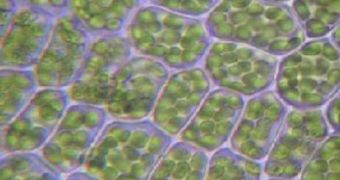Cellulose is one of the most promising materials for creating biofuels, and also the key ingredient in plants. It's the basic component of cellular walls, as well as the substance that gives plants shape. But, until now, researchers have been in the dark about how it gets to the place where it's needed. That's no longer a problem, as a team made up of researchers from the Carnegie Institution Department of Plant Biology and the Wageningen University, in the Netherlands, have found out how enzymes redirecting cellulose work, and what triggers their actions.
The new study, which is published online ahead of print in the June 14th issue of the journal Nature Cell Biology, analyzes the protein complex that allows for cellulose to be transported into cellular walls, where it essentially separates one cell from another, allowing them to work independently. “Cellulose is the most abundant reservoir of renewable hydrocarbons in the world. To understand how cellulose might be modified and how plant development might be manipulated to improve crop plants as efficient sources of energy, we need to first understand the cellular processes that create cellulose and build cell walls,” study co-author David Ehrhardt, from the Carnegie Institution, explains.
The team learned that microtubules, an array of protein fibers, were the main complexes responsible for guiding cellulose and enzymes to cellular plasma, a layer that separates the cells, but is located inside the cellular wall. They also found that the main enzyme in charge of producing cellulose fibers was cellulose synthase, a fact that they had proven in a previous study, when they genetically engineered a plant to produce a fluorescent version of the stuff. They observed the formation with high-tech viewing techniques and the processes associated with it in detail.
For the new study, the main purpose was to detect the early connections that formed between cellulose synthase complexes and microtubules, and how these connections developed inside the plant. The researchers observed that the microtubules were the ones responsible for directing the cellulose complexes to their destinations, basically acting like traffic cops inside the model plant, Arabidopsis. Additionally, the structural element actin cytoskeleton was found to play an essential role in the general distribution of the cellulose complexes in the plant, whereas the microtubules were responsible for the final shapes of the arrangements.

 14 DAY TRIAL //
14 DAY TRIAL //